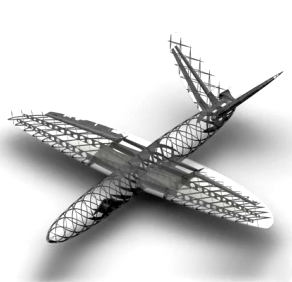
Scientists have successfully flown the world's first 3D printed plane, according to a report in New Scientist. Created entirely with printing technology, the plane went from design to completion in one week. Thanks to its 3D-printing origins, it has no fasteners and even its moving parts were printed all at once.
While this experimental craft appears to only be a model plane, the experiment was about far more than creating and flying model planes. The research team, led by Led by Andy Keane and Jim Scanlan of the University of Southampton, believe that uncrewed aircraft, known as drones or UAVs, will soon go from design to construction in just days.
3D printing's great promise to manufacturing
3D printing is allowing engineers to explore various structures and designs that would otherwise be far too expensive to manufacture with other techniques. 3D printing, a process which has rapidly developed over the last 20 years, uses lasers-assisted equipment to create plastic or metal objects. The process builds one layer at a time from slices only 100 um thick. The articles explains the process:
The 3D printer first slices up an object's computerised design into hundreds of easily printable layers. Each layer is then "printed" by training a laser beam on a bed of polyamide plastic, stainless steel or titanium powder - depending on the object being created - tracing out the entire 2D shape required for that layer. The laser's heat fuses the particles together at their boundaries. Once each layer is complete, more powder is scattered over it and the process repeated until a complete artefact is produced.
What the printer spits out is a powdery "cake" from which the desired object can be retrieved simply by pulling it out, like a child yanking a buried toy from a sandpit
To create a stronger object that can withstand higher loads and stresses, an electron beam can be used in place of a laser to melt the powder particles completely. And because 3D printing involves no cutting or grinding of metal, it offers vast design freedom.
To read more about the experimental air plane and 3D printing, see the full article here.


